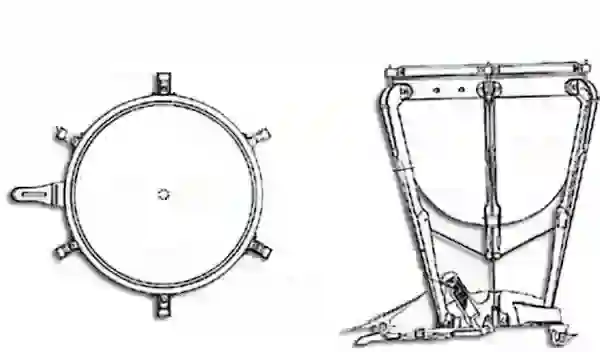Construction and function of the Timpani - Philipp Dangas
Construction and function of the Timpani
The two main components of the timpani are the skin, made of untanned calf or donkey skin, and the hemispherical kettle, made of copper or brass. The skin serves as a vibration exciter and the shell as a resonance body. The skin is stretched over a tension ring and thus covers the opening of the shell. It is held in place by an iron ring, the so-called pull ring. This in turn determines the diameter of the vibrating surface of the skin. Which, depending on the size of the timpani, is 30-50 cm larger than the diameter of the opening of the kettle. The pull ring is pressed against the head by a screw mechanism. It thereby produces the voltage required for vibration excitation.
This pressure can be changed using the screw mechanism. This changes the tension of the head and the pitch. There is a small opening at the lowest point of the boiler bottom. Through which the excess air in the shell can escape when the skin is struck. Tightening the screws completes the tuning of the timpani. In the course of its development, the time-consuming tightening of the individual screws was replaced by a so-called "machine", which acts evenly on the entire periphery (machine drumming).
With the pedal timpani, the pitch can be controlled with the help of a foot pedal. Thus, the timpanist is able to continuously change the tuning while playing. He uses so-called “mallets” to beat the skin. The sticks of the drumsticks are mostly made of tonking cane or ash wood and are about 30 cm long. The mallets are made of either wood (hard mallets) or cork (soft mallets). Covered drumsticks have a felt or flannel cover. There are generally 3 different mallet sizes.
Download size: 97.2 kilobytes
Table summary of the components of percussion instruments
This table briefly describes the components of percussion instruments. These are drumsticks, batter heads, kettles and pedals.
Front and side view of a timpani

Timpani ... Italian pronunciation: [ˈtimpani]) or kettledrums (also informally called timps) are musical instruments in the percussion family. A type of drum categorised as a hemispherical drum, they consist of a membrane called a head stretched over a large bowl traditionally made of copper …Referenz: https://en.wikipedia.org/wiki/Timpani
Internal search function
| Name | Value | Delete |
|---|